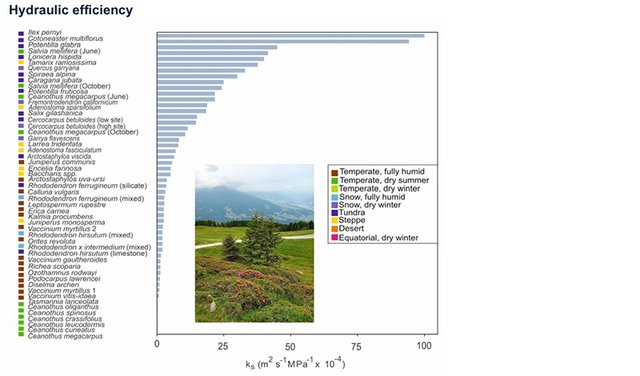Plant Biology ist ein internationales Fachjournal mit breitem Themenspektrum aus allen botanischen Disziplinen, wie Physiologie, Molekular-, Zell- und Entwicklungsbiologie, Genetik, Ökologie, Evolution, Ökophysiologie, Pflanzen-Mikroben-Interaktionen und Mykologie. Die DBG veröffentlicht Plant Biology gemeinsam mit der Königlichen Botanischen Gesellschaft der Niederlande. Herausgeber der Plant Biology sind Prof. Dr. Christiane Werner (Freiburg) und Prof. Dr. J. Theo M. Elzenga (Groningen).
Papers, Reviews, Themen und Thesen
In Plant Biology publizieren Wissenschaftlerinnen und Wissenschaftler Forschungsergebnisse im Original oder verfassen Reviews. In der Rubrik "Acute Views" diskutieren sie aktuelle Themen und Thesen und können provokante Ansichten darstellen. Zuvor begutachten unabhängige Experten in einem zügigen Review-Prozess die eingereichten Artikel.
Kostenfrei Open Access publizieren
Mitglieder von deutschen akademischen institutionen können ihre Artikel über pflanzenwissenschaftliche Themen kostenfrei Open Access in unserer Zeitschrift Plant Biology publizieren (die Article Processing Charge, APC entfällt dann, wegen des DEAL-Agreements). Seit 15. Februar 2023 stellt die neue Website des DEAL-Konsortiums deutschen Einrichtungen, wissenschaftlichen Autor*innen und der interessierten Öffentlichkeit alle Informationen rund um DEAL unter https://deal-konsortium.de/ zur Verfügung und unterstützt sie dabei, die umfangreichen Leistungen der Verträge bestmöglich zu nutzen.
Impact Factor
Plant Biology’s Impact Factor has now reached 3.87, which is a strong increase on 2020 (3.08 in 2020, Source: Journal Citation Reports, Clarivate Analytics). Plant Biology is now ranked 58/239 in the Plant Science Category, which is the top quartile.
Historisches und neuer Verlag
Plant Biology ist die Nachfolgerin der von 1882 bis 1987 von der DBG herausgegebenen "Berichte der Deutschen Botanischen Gesellschaft" und der von 1988 bis 1998 erschienenen "Botanica Acta".
In den Jahren 1999-2007 erschien das Fachjournal beim Thieme-Verlag. Seit Januar 2008 erscheint das Fachjournal der Gesellschaft nun alle zwei Monate bei Wiley-Blackwell.
Zugang
Mitglieder der DBG können über das Intranet auf alle Artikel des Fachjournals zugreifen.
Die einzelnen Ausgaben stehen hinter einer Bezahl-Schranke auch auf der Verlags-Website zur Verfügung.




















